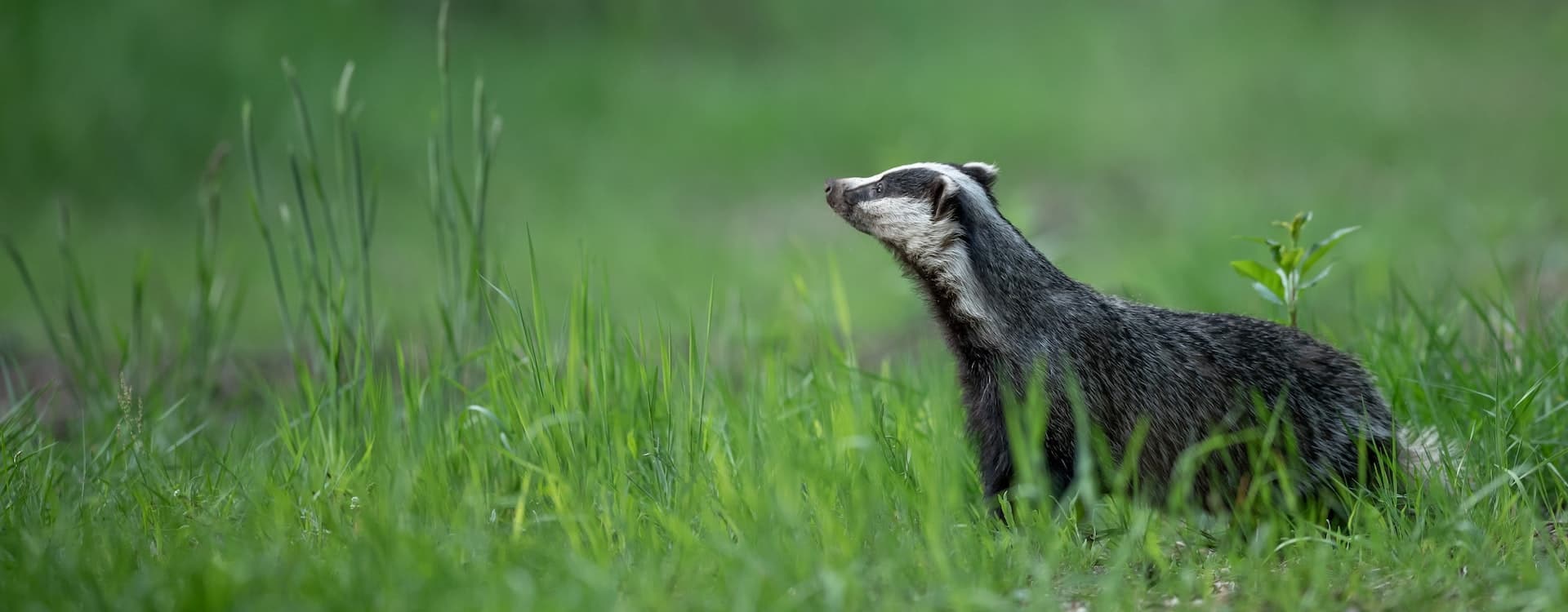**Ever wondered what makes badgers so intriguing? These burrowing mammals have been capturing the curiosity of wildlife enthusiasts for years. With their unique behavior, incredible digging skills, and distinctive appearance, badgers are more than just cute critters. In this article, we’ll dive deep into the world of badgers, exploring their habitats, behaviors, and the role they play in ecosystems.**
Badgers are not just any animals; they’re survivors of ancient times, with ancestors dating back millions of years. Their rugged looks, complete with sharp claws and a stocky build, make them perfectly adapted to life in the wild. But there’s so much more to these creatures than meets the eye. From their underground homes to their fierce defensive tactics, badgers are truly remarkable.
So, why should you care about badgers? Beyond their adorable appearance, these animals play a vital role in maintaining the balance of nature. By digging burrows, they help aerate soil and provide homes for other creatures. Plus, their diets contribute to controlling pest populations. Stick around as we uncover the secrets of badgers and why they deserve our admiration and protection.
Read also:Natalia Grace The Rising Star Shining Bright In The Spotlight
Table of Contents
- Badger Biography: A Glimpse into Their World
- Where Do Badgers Live? Exploring Their Habitats
- What’s on the Menu? Understanding Badger Diets
- Badger Behavior: Unique Traits and Habits
- Conservation Efforts: Protecting These Incredible Animals
- Threats to Badgers: Human Impact and Solutions
- Badger Myths: Separating Fact from Fiction
- Fun Facts About Badgers
- Scientific Research on Badgers
- Wrapping It Up: Why Badgers Matter
Badger Biography: A Glimpse into Their World
Meet the Badger: A Quick Overview
Badgers are medium-sized mammals belonging to the Mustelidae family, which also includes weasels, ferrets, and otters. There are 11 species of badgers, each with its own unique characteristics. They’re found in various parts of the world, including Europe, Asia, and North America. One of the most well-known species is the European badger, scientifically known as Meles meles.
If you’re wondering what makes badgers stand out, it’s their robust body, short legs, and long claws. These features are perfectly suited for their primary activity—digging. Badgers can create extensive underground burrow systems, called setts, which serve as their homes and shelters. These setts can be quite elaborate, with multiple entrances and chambers.
Badger Biodata
| Species | Meles meles (European Badger) |
|---|---|
| Size | 29-39 inches long, including tail |
| Weight | 18-37 pounds |
| Lifespan | Up to 14 years in the wild |
| Range | Europe, parts of Asia |
Where Do Badgers Live? Exploring Their Habitats
Badgers are incredibly adaptable creatures, which is why they can thrive in a variety of environments. From forests and grasslands to deserts and urban areas, badgers have made themselves at home in many different ecosystems. Their ability to dig deep burrows allows them to survive in harsh conditions, such as extreme heat or cold.
In Europe, badgers are often found in woodlands, where they can access a diverse range of food sources. Meanwhile, in North America, the American badger prefers open prairies and deserts. These badgers have even been known to dig burrows in agricultural fields, sometimes causing headaches for farmers.
Why Do Badgers Dig So Much?
- To create safe shelters for themselves and their young
- To regulate temperature and avoid extreme weather conditions
- To store food and hide from predators
What’s on the Menu? Understanding Badger Diets
Badgers are omnivores, meaning they eat both plants and animals. Their diet varies depending on their location and the availability of food. Insects are a staple for many badger species, particularly earthworms, which make up a significant portion of the European badger’s diet. They also feed on small mammals, birds, reptiles, and fruits.
Interestingly, badgers have been observed caching food, meaning they store it for later use. This behavior helps them survive during lean times when food is scarce. Their keen sense of smell allows them to locate hidden prey, even under thick layers of soil.
Read also:Heather Thomas Unveiling The Life Achievements And Contributions Of A Remarkable Woman
Badger Behavior: Unique Traits and Habits
Badgers are fascinating creatures with complex social structures and behaviors. Depending on the species, they can be solitary or live in social groups. The European badger, for example, often forms large family groups called clans. These clans work together to maintain their setts and defend their territory.
One of the most remarkable things about badgers is their cleanliness. Despite their reputation as grumpy creatures, badgers are actually quite hygienic. They regularly clean their setts and even have designated latrine areas outside their burrows.
Badger Social Life
- European badgers live in clans of up to 15 individuals
- Clan members communicate through scent marking and vocalizations
- Badgers form strong bonds with their clan mates
Conservation Efforts: Protecting These Incredible Animals
Unfortunately, badgers face numerous threats in the wild, from habitat loss to human-wildlife conflict. In some areas, badgers are hunted for their fur or killed because they’re perceived as pests. Conservation efforts are crucial to ensuring the survival of these amazing animals.
Organizations like the Badger Trust in the UK work tirelessly to protect badgers and their habitats. They advocate for better legislation, educate the public about badgers, and conduct research to better understand these animals. By supporting such initiatives, we can help safeguard the future of badgers.
Threats to Badgers: Human Impact and Solutions
Human activities pose significant risks to badger populations. Road accidents, deforestation, and agricultural expansion are just a few examples of how humans impact badger habitats. In addition, badgers are sometimes targeted by farmers who believe they damage crops or spread diseases like bovine tuberculosis.
To mitigate these threats, conservationists recommend creating wildlife corridors to connect fragmented habitats. Encouraging sustainable farming practices and promoting coexistence between humans and badgers can also help reduce conflicts.
Badger Myths: Separating Fact from Fiction
There are many myths and misconceptions surrounding badgers. Some people believe they’re aggressive or dangerous, while others think they’re pests that cause more harm than good. Let’s debunk some of these myths:
- Badgers are not inherently aggressive; they only attack when provoked or threatened
- They play an important role in ecosystems by controlling pest populations
- Badgers are not responsible for spreading diseases like bovine tuberculosis in most cases
Fun Facts About Badgers
Here are some interesting tidbits about badgers that might surprise you:
- Badgers can dig up to 10 feet deep in just a few hours
- They have a mutualistic relationship with honey badgers, sharing burrows and food
- Badgers are known to form alliances with foxes to hunt together
Scientific Research on Badgers
Scientists continue to study badgers to better understand their behavior, ecology, and conservation needs. Recent research has shed light on topics such as badger genetics, disease transmission, and social dynamics. For example, studies have shown that badgers can recognize each other based on scent and facial markings.
Data from organizations like the Wildlife Trusts indicate that badger populations are stable in some areas but declining in others. Continued research is essential to developing effective conservation strategies.
Wrapping It Up: Why Badgers Matter
Badgers are incredible creatures that deserve our respect and protection. From their impressive digging abilities to their vital role in ecosystems, these animals contribute to the health and diversity of our planet. By learning more about badgers and supporting conservation efforts, we can ensure they continue to thrive for generations to come.
So, what can you do to help? Start by spreading awareness about badgers and their importance. Share this article with your friends and family, and consider supporting organizations working to protect these amazing animals. Together, we can make a difference!
Oh, and don’t forget to leave a comment below sharing your favorite badger fact. Let’s keep the conversation going!


